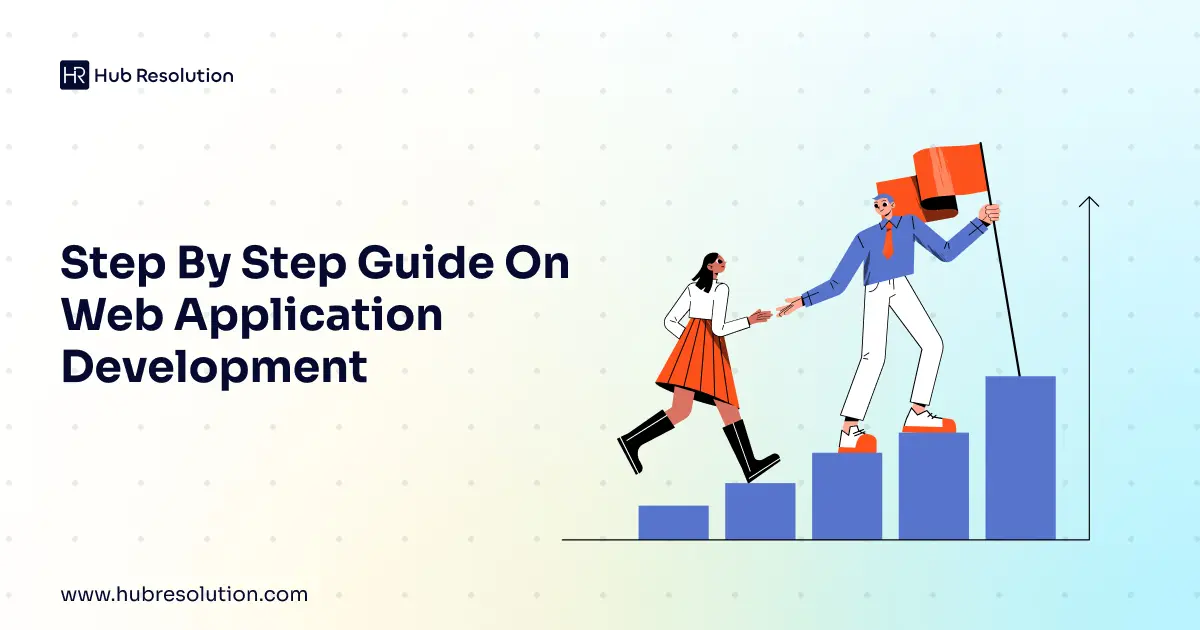Web application development has become a crucial aspect of modern business, enabling companies to reach and engage with customers in innovative ways.
From e-commerce platforms to social networks, web applications are integral to the online experience.
In this step-by-step guide, we will walk you through the process of web application development, covering everything from conceptualization to deployment, with a focus on creating efficient, user-friendly, and scalable web applications.
Understanding Web Application Development
What is a Web Application?
A web application is a software application that runs on a web server and is accessed through a web browser over a network, typically the internet. It differs from a website in that it performs tasks or functions for the user, often through complex interactions.
Importance of Web Application Development
Web applications have become essential tools for businesses due to their ability to provide dynamic and interactive user experiences. They enable businesses to deliver services, automate processes, and engage with their audience in ways that were previously unimaginable.
The Step-By-Step Process
1. Define Your Objectives and Requirements
- Identify the Purpose: Determine the specific function your web application will serve.
- Understand the Audience: Define the target users and their needs.
- Outline Features: List the features and functionalities your web application will require.
2. Planning and Architecture
- Create Wireframes: Develop wireframes to visualize the layout and user interface.
- Architecture Design: Plan the technology stack, databases, and server infrastructure.
- Define User Journey: Map out the user flow and interactions within the application.
3. Front-End Development
- Design Mockups: Create visual designs that align with the wireframes.
- Implement UI/UX: Develop user interfaces that are intuitive and engaging.
- Coding: Write front-end code using languages like HTML, CSS, and JavaScript.
4. Back-End Development
- Database Creation: Design and create the database structure that will support the application.
- Server-Side Logic: Develop the server-side logic and business rules that power the application.
- API Integration: Integrate with third-party APIs for additional functionality.
5. Testing
- Unit Testing: Conduct tests on individual components and functions.
- Integration Testing: Verify that all components work together as expected.
- User Acceptance Testing: Get feedback from real users to identify and fix any issues.
6. Deployment
- Hosting: Choose a suitable web hosting service for your application.
- Server Configuration: Configure the server environment for optimal performance and security.
- Continuous Integration/Continuous Deployment (CI/CD): Set up automated deployment pipelines for efficient updates.
7. Maintenance and Updates
- Bug Fixes: Address any issues that arise post-deployment.
- Feature Enhancements: Continuously improve and add new features based on user feedback.
- Security Updates: Stay vigilant in applying security patches and updates.
Best Practices in Web Application Development
To ensure a successful web application development process, consider the following best practices:
- Scalability: Design the application to handle increasing loads and future growth.
- Security: Implement robust security measures to protect user data and the application itself.
- Performance Optimization: Optimize code and assets for fast load times and responsiveness.
- User-Centric Design: Keep the user experience at the forefront of all development decisions.
- Code Documentation: Maintain thorough documentation for future reference and HubSpot onboarding new developers.
Web application development is a multi-faceted process that requires careful planning, design, and execution. By following the step-by-step guide outlined above and adhering to best practices, you can ensure the successful development and deployment of a high-quality web application that meets the needs of your users and business objectives.
As technology continues to advance, the demand for innovative and reliable web applications will only grow. Embracing a meticulous and user-focused approach to web application development will position your business for success in the digital realm.

